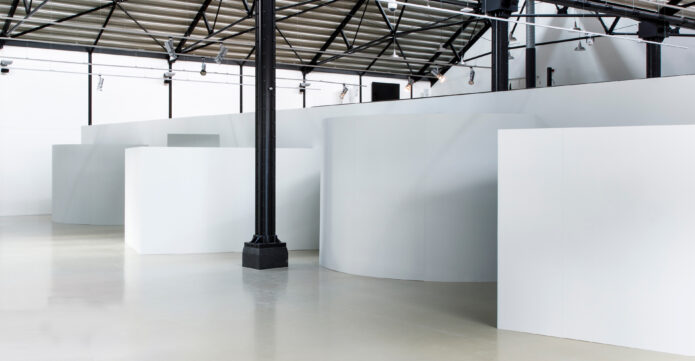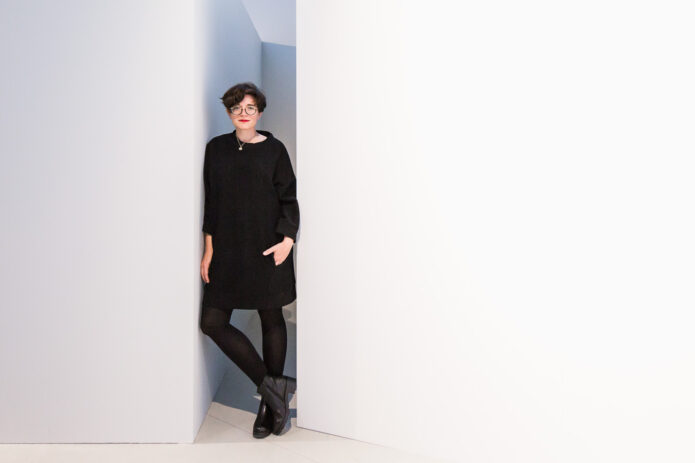
24 Nov –
1 Dec 2020
Online Film Program: Dania Reymond
As part of the exhibition From what will we reassemble ourselves, Framer Framed is happy to present an accompanying online film program curated by Natasha Marie Llorens. The program remains centered on the genocide at Srebrenica but it also widens the focus outwards towards artworks that deal with the representation of violence more broadly. Starting on the 17 November, the film work of three different artists will be freely accessible through Framer Framed’s website. Additionally, each week there will be an online-streamed conversation between the exhibition curator Natasha Marie Llorens and each artist. Up next, a conversation with Dania Reymond on 27 November at 19:00.
Online Interview – 27 November
Dania Reymond
Borrowed Landscape #1 (2011) is a short documentary film by Franco-Algerian artist Dania Reymond shot in Srebrenica in Bosnia and Herzegovina. The voice over is made up of different people describing a painting by Pieter Bruegel the Elder, The Massacre of the Innocents (c. 1565–1567). Reymond’s subsequent film, Borrowed Landscape #2 (2013), is roughly the same length and shot in Bentalha, a southern suburb of the Algiers that was the site of a massacre in 1997. The film has two points of reference: a famous photograph by Hocine Zaourar, The Madonna of Bentalha (1997), and another painting by Pieter Bruegel the Elder, The Triumph of Death (1562). Taken together, Reymond’s films present a study of the representation of violence spanning continents and centuries centered on the figure of the bystander—the one who is present for the event and the one who watches it through the camera/painting frame.
Borrowed Landscape #1
The Massacre of the Innocents, by the 16th century Flemish painter Pieter Bruegel the Elder, is a painting depicting a snow-covered medieval village square in which children are being killed by armed soldiers. Bruegel has re-interpretated a passage from the Gospel of Matthew (2:16-180) in which Harod the Great orders infants put to death in order to circumvent the prophecy that a baby born in Bethlehem will one day challenge his rule. Two versions of Bruegel’s painting exist—one in which children are shown being killed on the ground of the town square in graphic detail and the other in which the ‘innocents’ are represented by a gaggle of geese. Reymond shows neither version but rather pans the camera slowly across the nearly empty landscape of the town of Srebrenica blanketed in snow as voices off camera describe their impressions of Bruegel’s work without naming it.
Reymond’s film is shot 16 years after the massacre in Srebrenica. There are no apparent traces either of the dead or of the deprivation people experienced there in the months that preceded the fall of the ‘UN Safe Area.’ Voices describe terrible violence done to children in front of their parents at the hands of a uniformed military forces against the moving image of an empty playground or a skyline hemmed in by mountains and punctuated by the solitary minaret of the town’s mosque. Reymond intended the film as a comment on the European community’s ambivalence towards the memory of the massacre.
Borrowed Landscape #2
Borrowed Landscape #2 is also centered on a massacre that is remembered with ambivalence by the European community that took place only two years after the massacre in Srebrenica in 1997 in the small Algerian town of Bentalha on the outskirts of the capital. The massacre occurred between September 22nd and September 23rd and claimed somewhere between 200 and 400 lives. The context for the massacre is the Black Decade, a period of violent unrest in Algeria that began in the early 1990s and officially concluded with a national amnesty in 2002. The conflict played out between the Algerian army and a coalition of religious extremist groups banned from the national elections on the cusp of their electoral victory and forced underground.
Many of Reymond’s shots of the massacre site a decade later are taken from inside a moving car with a man’s voice marking important locations just off-screen. The car’s driver and the film’s erstwhile narrator also authored a now-famous photograph taken at the time of the massacre. The photograph, The Madonna of Bentalha, is a closely framed portrait of a woman who has just learned of the death of her family members.
This online event is FREE and in English.
Text by Natasha Marie Llorens.
Artist Talk / Conflict / Political Climate /
Exhibitions

Exhibition: From what will we reassemble ourselves
A group exhibition conceived by Anna Dasović and curated by Natasha Marie Llorens
Agenda
Online Film Program: Damir Avdagić
Online Film Program with Curator Natasha Marie Llorens
Online Film Program: Selma Selman
Online Film Program with Curator Natasha Marie Llorens
Network

Dania Reymond
Artist
